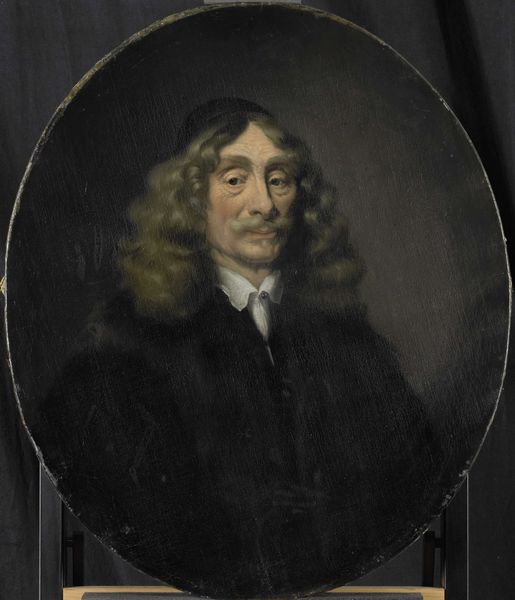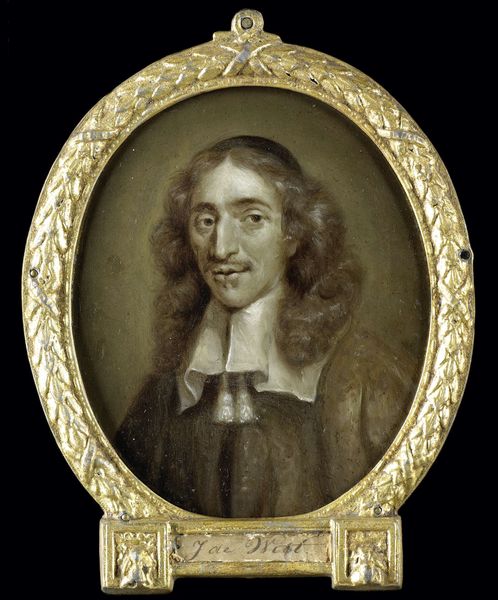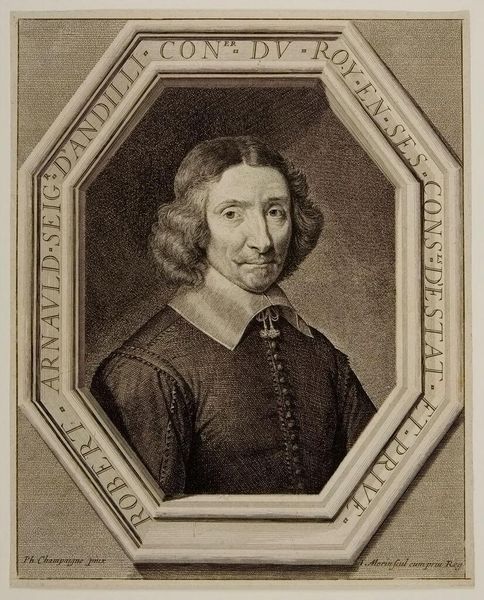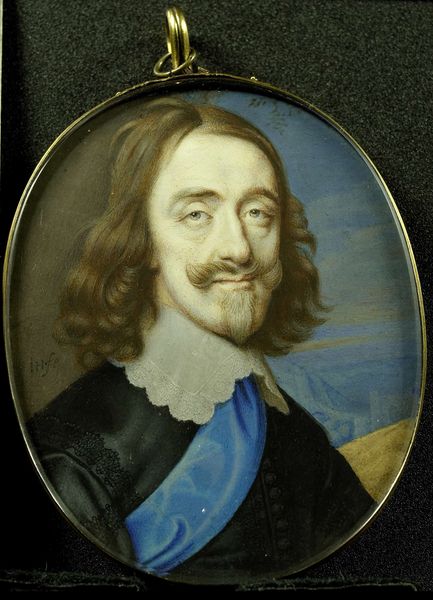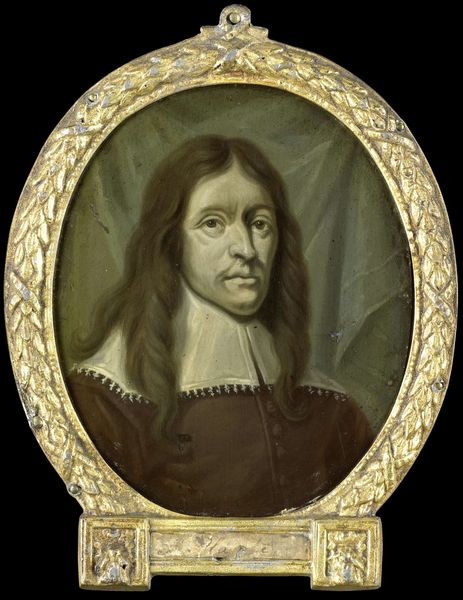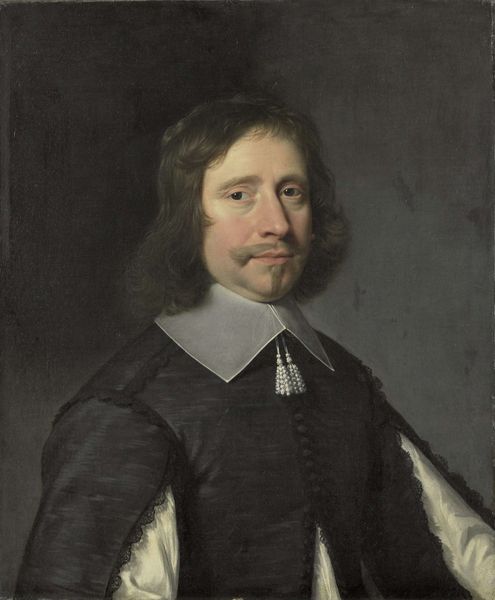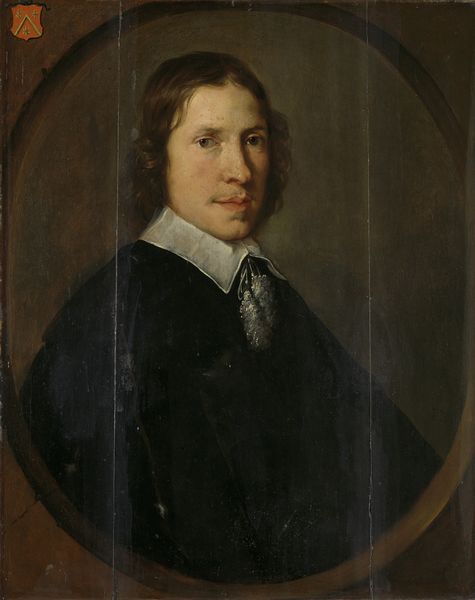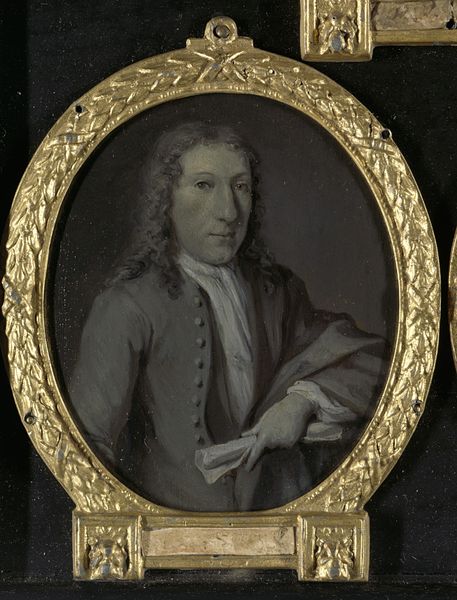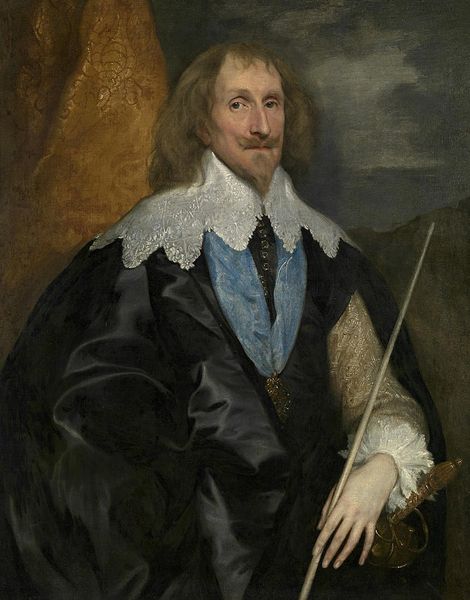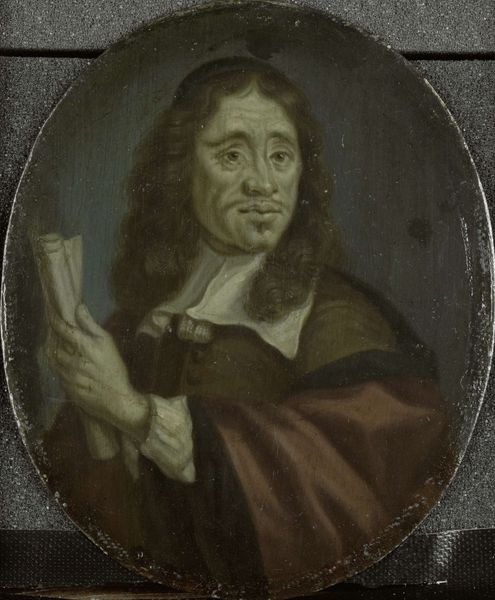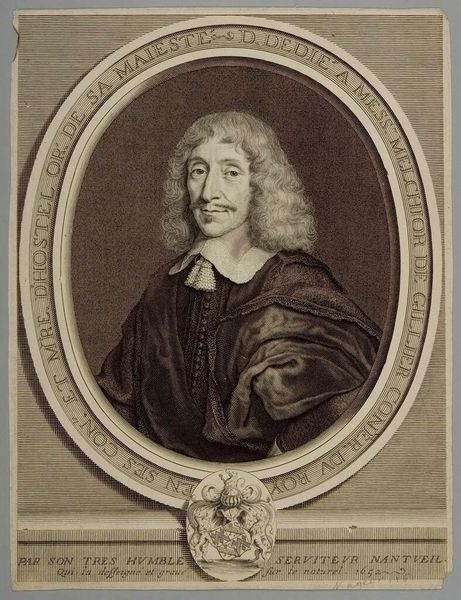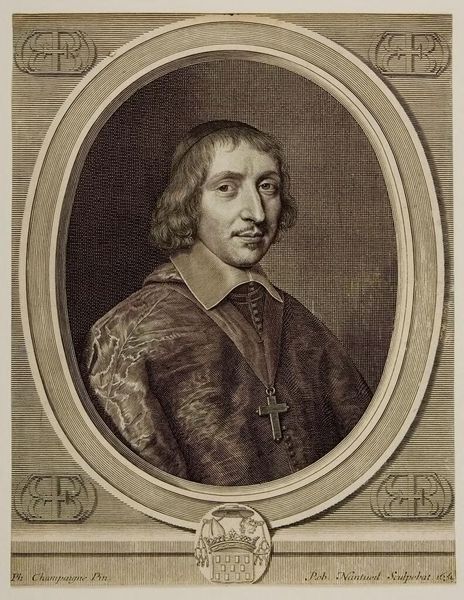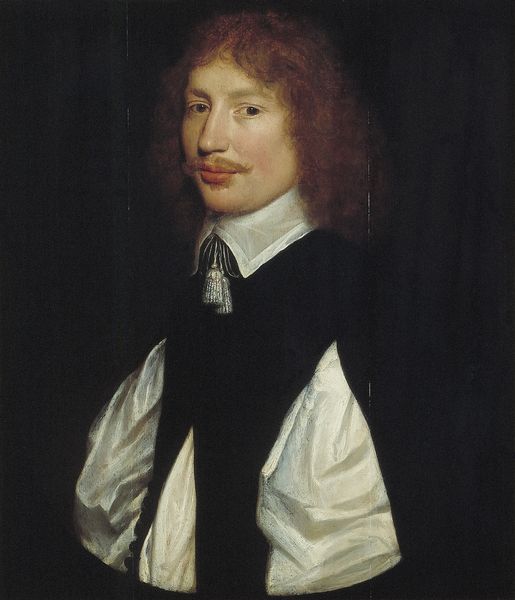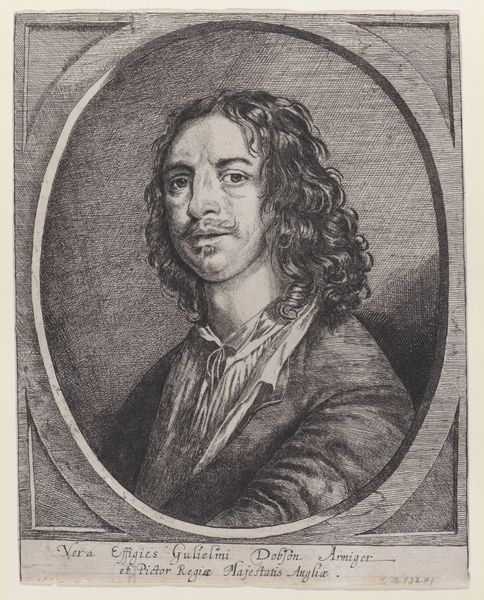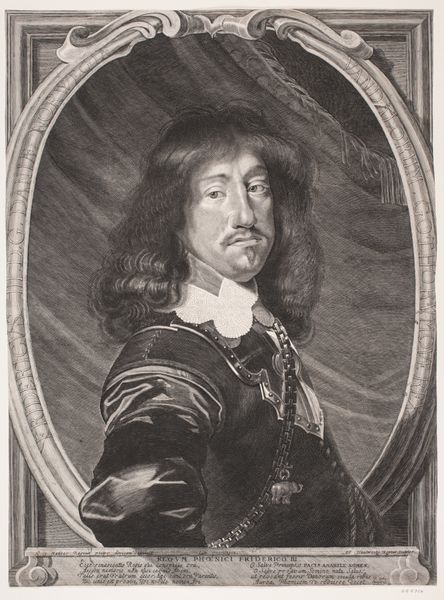
Portrait of Johan de Vries, Director of the Rotterdam Chamber of the Dutch East India Company, elected 1667 1695 - 1722
0:00
0:00
painting, oil-paint
#
portrait
#
baroque
#
portrait
#
painting
#
oil-paint
#
history-painting
#
realism
Dimensions: height 82 cm, width 68 cm
Copyright: Rijks Museum: Open Domain
Curator: Oh, the somber elegance of it! It's like looking into a dark pool and seeing a flicker of something profound staring back. Editor: Indeed. We're looking at a portrait by Pieter van der Werff. It depicts Johan de Vries, who was a director of the Rotterdam Chamber of the Dutch East India Company, elected in 1667. This piece was created sometime between 1695 and 1722. Curator: That oval composition feels so... constricting. It's almost like he's trapped, or at least, incredibly aware of the boundaries around him. Does it speak to the gilded cage of power, perhaps? He’s almost swimming in all that black fabric. Editor: It certainly raises questions about the construction of identity through portraiture, and the very visible demonstration of status during that era. This man profited enormously from the labor and exploitation enacted by the VOC across the globe, particularly in Asia. He’s practically drowning in the spoils. Curator: He doesn’t look particularly…joyful about it. There’s a certain pensiveness there. The artist really captured a mood; you can see a story written across his features if you linger long enough. I bet he carried the weight of those choices. I imagine evenings where that pensive look deepened to something near sorrow. Editor: Perhaps. Or, perhaps that pensive expression merely served the purpose of cultivating a persona of seriousness and gravitas fitting for someone in his position. It’s fascinating how art can both reveal and conceal. This portrait certainly leaves plenty open to interpretation. Curator: Isn’t that the joy of it all, though? To find the echoes of our own experiences in a face from centuries ago, to see ourselves in them, and, through them, maybe, understand the weight of those choices a little better. It gives you pause. Editor: Absolutely. It reminds us to continually question the narratives we inherit, and to unpack the power dynamics embedded in seemingly straightforward depictions of historical figures. This is certainly more than just paint on canvas.
Comments
No comments
Be the first to comment and join the conversation on the ultimate creative platform.
